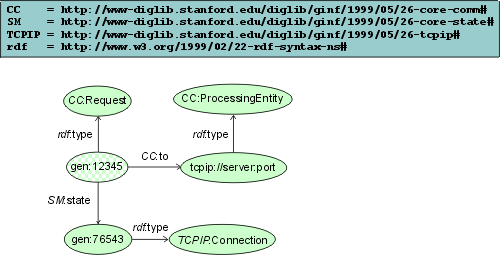TCP/IP Protocol Mapping (original) (raw)
Working Draft
TCP/IP Layer Specification
The TCPIPLayer provides a message delivery facility using TCP/IP protocol mapping. This is the simplest mapping of the specified. It is based on a full-duplex TCP/IP connection where one component pushes messages on one side and another components gets them on the other side of the communication channel. The messages are separated from each other in a natural way; once the parser has read a complete RDF model from the input stream it stops. Once a TCP/IP connection is established both client and service listen for messages which are delivered asynchronously. HTTPLayerrelies on the same principles but uses HTTP-specific coding of the messages and message delimiters.
Interface
TCPIPLayer implements a connection-oriented service. The connection is maintained as long until an explicit request comes from the service to terminate it (DiscardState). If the connection is interrupted due to some other reason, the client or the service is notified about it again using the DiscardState request. The default port for the TCP/IP mapping is 8270.
TCPIPLayer extends the StateInfo class defining a new class called Connection. A processing entity is attached to theRequest identifying the server and port where the request should be sent.
Example:

See also: Core Communication,Basic State Maintenance, HTTP
Sergey Melnik. Last modified: 06/01/99